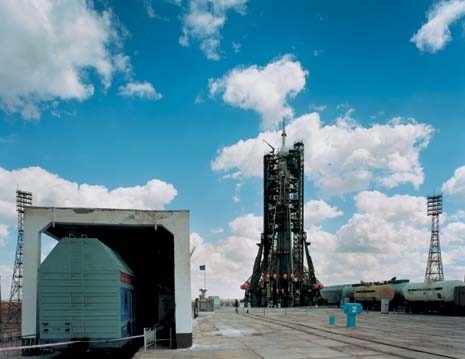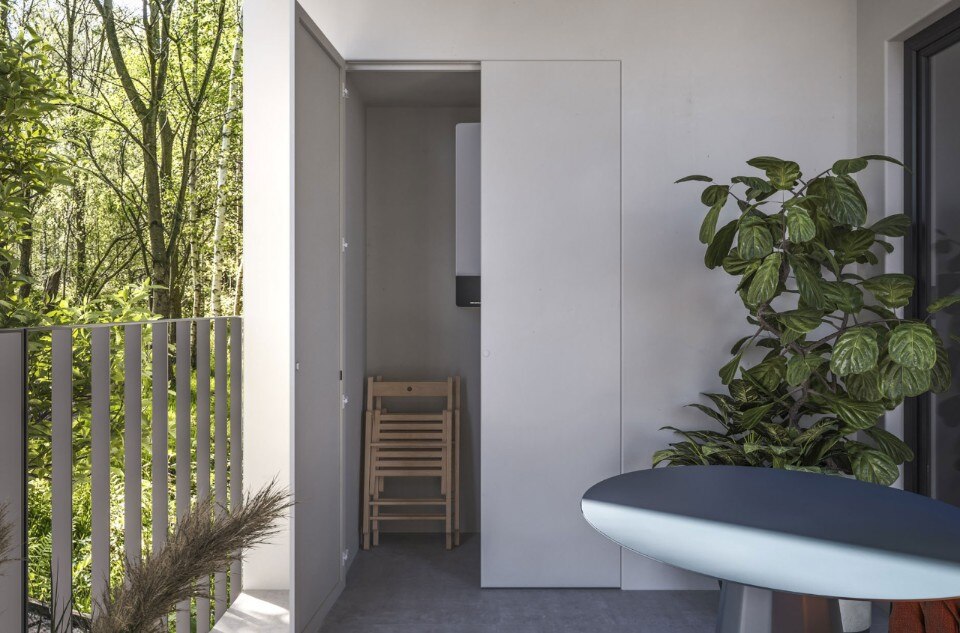Photography by Red Saunders
On the lonely wastes of the Kazak steppe, the enormous footprints left by the Soviet empire are fading fast. The process of gentle decay accelerated tragically last month when the roof of the main hangar at the Baikonur Cosmodrome, once the jewel of the empire’s space programme, collapsed, killing at least eight people. It was dramatic proof of the virulent decay eating away at the still astonishing vestiges of a former superpower. Just two weeks earlier, watching the launch of the latest Soyuz rocket containing the South African multi-millionaire and space tourist Mark Shuttleworth, the Italian Air Force pilot Roberto Vittori and the Russian flight commander Yuri Gidzenko, I visited the vast structure that stood impossibly tall against the stark Kazak skies and found a treasure trove of space memorabilia.
Inside the pallid gloom, the Buran, the Soviet Union’s elegant answer to the American shuttle, lay resplendent on its fuel rockets, its tiled surface smooth and unscarred by the space orbits it made during the late 1980s. Next door, where new Soyuz and Progress rockets were held in prim cages, the dim hum of electric machinery told of operational efficiency and calm. On the wall above, a giant mural depicting the head of Sergei Korolev, the father of the Soviet space programme, spoke volubly of the Russians’ continued pride in their achievements. I am left wondering whether the coquettish female guard accompanying me, a plump retro Venus with platinum hair and a tiny military cap perched sideways on her head, has emerged unhurt from the ruins.
Even after the collapse of the hanger, the giant gantries of the Baikonur Cosmodrome still stand tall, their rectilinear silhouettes etched on the vast sky like the blueprint for a modern Stonehenge. Seen from a distance, they look like anorexic skyscrapers, the intention for a city that never came about. Below them, spreading into the far distance, a flat carpet of land bends into a parabolic curve, while the huge, horrible sky hangs above. Both are locked together by the vertical stretch of these metal limbs, the only punctuation against the insistent horizontality of the scene. In such a place without scale, defined by a geography in which the measurable proportions of Europe are meaningless, even the epic mode is silenced. This is Asia at its most featureless: neither desert nor mountain, lake nor crimpled coastline, this part of Kazakhstan is where nature simply runs out of ideas. How ironic, therefore, that it was at this very spot – 45.5 degrees north, 63.4 degrees east – that humankind first performed one of its greatest miracles.
It begins with the arrival, in the cold spring of 1955, of 3,000 construction workers, brought in by rail. Baikonur does not yet exist: the only other human voices are those of herdsmen and nomads in the nearby village of Tyuratam. Ordered to lay the foundations for a launch pad and working in conditions of the greatest secrecy, the workers dig a channel toward the Syr Darya River, from which they will draw water to quench their own thirst as well as that of the concrete mixers they brought with them. Within two years, the Russians not only have a launch site, they have also tested their first intercontinental ballistic missiles. From this natural wasteland, this non-city, comes the potential to make atomic deserts out of real cities across Northern Europe. It is as if Baikonur – deliberately named after a town 230 miles away to confuse hostile map-makers – desires, in a moment of totalitarian jealousy, to reduce everything else to a level it can understand. But none of these giant spears tipped with plutonium, uranium or some other subterranean poison are ever actually thrown in anger: Baikonur becomes a synonym for intent, and that is enough.
The presiding genius behind Baikonur’s development is Korolev, a man whose name was never publicly mentioned during the Khrushchev or Brezhnev years, when he was known only as the ‘Chief Designer’. Fished out of the Siberian goldmine to which he had been sent by Stalin – being the protégé of a rival had been cause enough – he is given access to huge resources and a free hand in designing the Cosmodrome, although his status as a convict is not revoked.
Failure, it is understood, is not an option. The site itself is enormous and soon reflects the greater ambitions of this extraordinary man, an individual whom, as the small local museum dedicated to him would have it, should rank alongside Galileo, Archimedes and Newton for the sheer level of his achievement. Like them, he has a fascination for gravity and its effects. Unlike them, he seeks to defeat it by putting a man into space. It is noticeable how any mention of Korolev’s personal life and his own tribulations is entirely absent from the museum. Instead, the small, ordinary building houses a curiously banal assortment of relics from space. Among the numerous display cabinets filled with medals and space trivia, a small capsule contains the stuffed bodies of the mouse, rat and rabbit that flew together in their own incredible journey during an early test flights; the spacesuit worn by Laika, the first dog in orbit; the husk of the accommodation capsule of an old Soyuz rocket, smaller than a Fiat Uno. There are T-shirts bearing the legend ‘Baikonur Cosmodrome’ for sale at the museum’s exit, but they are only available in size XXL.
The first significant landmark that Korolev achieves is the launch of Sputnik, the first artificial Earth satellite, on October 4, 1957. Then the big one, the event that really shocked the Americans: the launch of Vostok, the first piloted spacecraft, on April 12, 1961, with cosmonaut Yuri Gagarin at the helm. Far above the scorching surface of Baikonur, Gagarin orbited Earth in less than two hours, becoming an Olympian hero, a man whose model-perfect face would adorn a million walls and a greater number of schoolboy albums across the Soviet Union. As Gagarin sat strapped inside his aluminium cage, watching the heaven and Earth pass silently across his porthole window, he may have caught sight of the Cosmodrome, with its 85-kilometre reach from north to south and 125-kilometre span from east to west – a territory as large as Moldova. He may even have thought of the little dacha, with its coloured windows and simple homely furniture, that he spent his last night in, under the watchful gaze of Korolev, ensconced in his own cottage next door. Both buildings remain exactly as they were, their fragile domesticity strangely out of sync with the huge industrial vocabulary surrounding them.
The site still boasts nine launch complexes, including fifteen launch pads for the Proton, Soyuz, Molniya, Zenit, Rockot and other launch vehicles, five tracking-control centres, nine tracking stations, and a 1,500-kilometre rocket test range. There are also eleven assemby facilities, three fuelling stations for spacecraft, one medical centre, two air fields, one oxygen-nitrogen plant, one heat and power plant and one gas turbine plant. A sprawling system of railways and roads links the disparate elements of the Cosmodrome together, but proximity is deliberately avoided since many of them – the fuel storage tanks and launch sites, in particular – are explosive catastrophes in the making. The main hangar’s collapse has made this lethal potential a grim reality. A network of massive fuel pipes slither like fat snakes across the ground between each isolated nodal point, so that from above the entire site resembles the nerve system of some prostrate leviathan. The monster’s last flailing gesture may only be a breath away.
Back in the 1970s, at the height of the Russian space programme, more than 120,000 people worked here – enough to populate a medium-sized city, except that there are none of the normal characteristics of urban life: shops, schools, restaurants, theatres, cinemas, libraries. This is because the Cosmodrome is a giant factory, a vast production facility with the sole task of ensuring the Soviet Union’s status as a world superpower. This explains why it is hard to describe the enormous buildings dotted across the site in strictly architectural terms, since they were clearly not designed with architecture in mind. Instead they serve as concrete carapaces for secret enterprises: the only clue to their connection with the space industry is the telltale presence of satellite dishes or tracking systems. All wear a prescribed anonymity. The model type for most of them is the grain silo or warehouse: cliff-like walls supported by thick buttresses and sliced brutally at the top to form simple boxes. Impossibly large metal doors punctuate the long flanks of these buildings, from which rockets, held in a horizontal clasp of protective metal fingers, occasionally emerge and move with choreographed grace along thin railway tracks to other buildings or, should their moment have come, to a distant launch pad. Although the buildings are impressive from afar, the desperate shoddiness of their construction is apparent on closer inspection: surface finish and adroit detailing have been jettisoned in the urgent process of erecting an edifice in very little time under the harsh conditions presented by the burning summer sun and the freezing winter nights. Guessing the age of these buildings is a game in itself: many of them seem to date from the 1950s to the ’70s, but the truth is that several of the giant tomb-like structures were only built during the ’80s – evidence of the stylistic repetition so beloved of totalitarian regimes.
Tomb-like they are, and tomb-like they have become. With the paint gradually stripped from their exterior by the knife-sharp winds that scrape the steppe with unrelenting zeal and the absence of any significant maintenance work by the Russians since the collapse of the Soviet Union, the future for the buildings around the shell of the main hangar is written upon them. It is a slow-motion Persepolis in the making, with temples to Olympian ideals groaning as they fall. You have seen with your own eyes the empty cradles out at the Buran launch site, several kilometres away. You have walked across the broken concrete to the rusting gantries, looked down into the huge flame-deflector pit, now waterlogged, and seen how the Russian space shuttle now lies defunct like some abandoned child’s toy in the desert scrub. However impressive the ziggurat-style mounds containing the buried fuel tanks may appear when seen against the horizon, one look at the broken pipes running back to the large assembly, repair and flight-control buildings tell a different story, one of irreversible decline.
The paradoxes are striking: how is it that a country with an economy weaker than that of Portugal, the poorest country in the European Union, can manage to put people into space? How is it that, amid the detritus of space vehicles and industrial waste matter that litters every square metre, there exist concentrated points of efficient high technology – mostly at the launch sites themselves and the tracking stations – that succeed in pushing ever slimmer, ever more efficient rockets into space? More than 400 launches have taken place from launch pad one, the site from which Gagarin ventured into space. Today the rockets that leap into the void from Baikonur celebrate Russia’s engagement with capitalism and carry commercial satellites, not bombs. Replete with complex surveillance and communications equipment and funded by Western companies, these satellites burst into orbit like seeds ejected from a giant pod. A site so long unseen, unknown, Baikonur now delivers a thousand electronic eyes and ears into space.
The final act in the history of Baikonur – an extended exhalation from the falling Russian basilisk, perhaps – is now being played out. The official announcement this February that the Russians were, for reasons of security (Kazakhstan is too near the Muslim belt of fundamentalist states for comfort) and cost (they lease the site from the Kazak Government for $115 million a year), planning to withdraw the space programme to their own territory has only just been refuted by the head of its space forces. We will be at Baikonur for at least 15 years, says General Anatoly Perminov.
How impermanent his boast sounds against the clouds of concrete dust still settling around the titanic ruin of the main hangar. As if to express the uncertainty surrounding the Cosmodrome, or to revolt, perhaps, against the unnatural success man has had there in subduing the laws of gravity, the earth beneath it has started to buckle and shift with nervous anticipation, sending staircases askew, chimneys down, walls out of kilter. Elsewhere, dramatic signs confirm the increasingly inhospitable conditions in the surrounding region. Excessive drainage and evaporation has caused the neighbouring Aral Sea, fed by the Syr Darya River, to shrink to a third of the size it was early last century in just the last 20 years. Its waters have become dangerously toxic as a result of the flood of chemicals poured into it from the fields of cotton that, until recently, were grown across swathes of Kazakhstan. Of the sea’s once-recorded 178 species of fish, only 30 or so remain. The supposed plan to blow up the Mair and Tien Shan Mountains to the east, thus releasing the water held in their icy glaciers to flood the Kazak steppe and reinvigorate the Aral’s waters, using nuclear weapons from Baikonur to do so, is only slightly less insane than the prospect, also being mooted, of digging a canal through to the Siberian Artic.
As the Russian imperium gradually retreats northward, the descendants of that human race that created a gateway to the stars on the Kazak steppe must now turn and see these dreams of stardust consumed by the vengeful sandstorm gathering to the southwest.
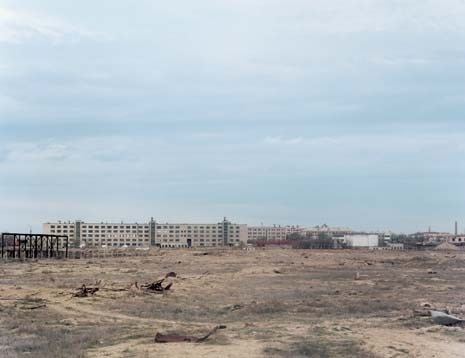


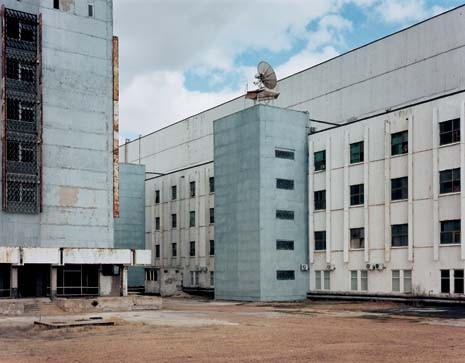
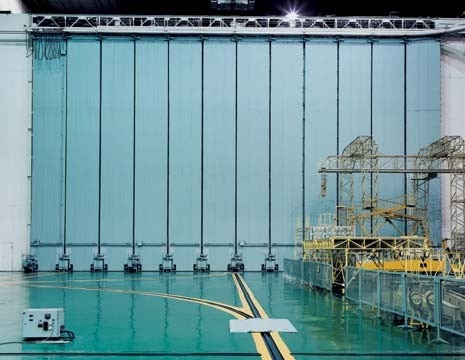

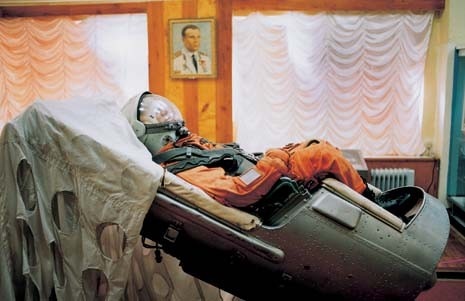

The New Brevo House by Pedrali
Brevo has given its Parisian headquarters, La Maison Brevo, a major makeover, prioritizing innovation and employee well-being for its 400 staff members. The furnishings, curated by Pedrali, transform the 3,000 sq m of interior and exterior space into dynamic, stimulating environments that foster collaboration and diverse work styles.



